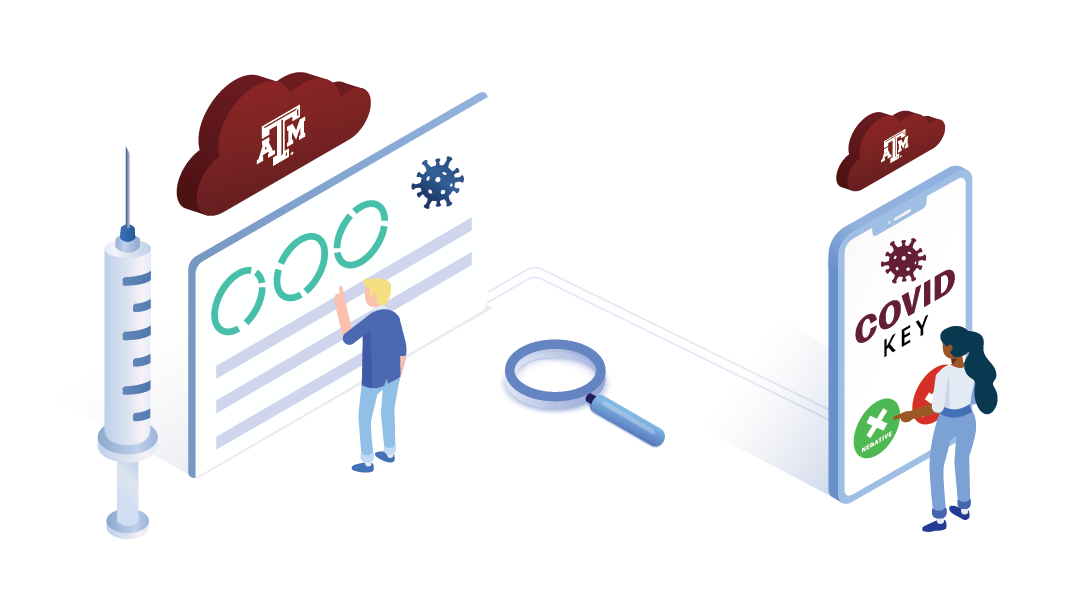Partner Success
The driving force behind each goal and accomplishment is our partners’ success. The Division of IT uses technology expertise to make the vision of our customers a reality. When we partner with campus members, efficiency and innovation often result.
Engineering Smarter Classrooms with IoT
Students in the College of Engineering’s Department of Engineering Technology and Industrial Distribution used the pilot IoT network to raise capstone projects to a new level. By harnessing the functionality of IoT, students can expand their knowledge and usage of technologies such as autonomous vehicles.
Mays Helps Campus Locate PII
Mays Business School helped create a best practices document to assist campus members use of the Spirion Data Loss Prevention (DLP) platform. DLP scans over 7.8 billion files monthly to detect Personally Identifiable Information (PII) such as social security numbers, bank account information and credit card details.
System and Division Increase Sharing of Intelligence Data
The Texas A&M University System and the Division of IT are streamlining the process for sharing cyber threat intelligence data. The System Operations Center further streamlined the process by adding the Flashpoint Intelligence Platform to the existing analysis capabilities and Texas A&M’s Filex service to discover users with compromised credentials.
TBC uses Microsoft 365 for Remote Training
The Texas A&M Telebehavioral Care Program (TBC) used Microsoft 365 to train mental health professionals during the pandemic. As one of the only telemental health training programs in the world, the TBC was challenged with the task of maintaining support for their trainees who had to work from home.
Campus Collaboration Results in Innovation
IT representatives from across campus comprise the Aggie Innovation Platform (AIP) Technical Working Group and collaborate to remove barriers, helping researchers and IT professionals take advantage of powerful cloud technologies. Strengthening professional development for IT pros while reducing the burden of on-campus infrastructure and maintenance makes the case that the AIP platform and community approach will be critical to the future success and innovation of IT at Texas A&M. Read more about this collaborative effort.

New App, Portal Monitors Livestock Health
The Department of Animal Science and AgriLife Extension are beta testing a Livestock Syndromic Surveillance mobile app designed to prevent the spread of infectious disease among livestock. Created by the Division of IT, the portal and app allow veterinarians to report various syndromes seen in the field, helping practitioners and state officials track and prevent the spread of diseases to keep meat prices from rising. The mobile app and corresponding web portal will launch in early 2022.
Prevent COVID U Project Identifies Early Infection
Texas A&M is using STAR for its participation in the Prevent COVID U program through the COVID-19 Prevention Network (CoVPN). The project is studying breakthrough infections and spread among 18-29 year olds who received the Moderna vaccine. Participants take daily COVID-19 tests at home and use a mobile app called COVID Key. The app is also connected to a mobile kiosk. The clinical markers obtained are correlated with data in the STAR environment about the participant’s status to discover correlations indicating early infection. Read more about the research.

Urban Reselience.AI Lab Predicts COVID Surges
The Urban Resilience.AI Lab, is using the Aggie Innovation Platform (AIP) to predict the spread of COVID-19 cases for U.S. Counties. The lab’s deep-learning model analyzes vast amounts of data to forecast with 64% accuracy — twice the accuracy of an untrained model. Read more about the research.
CBTS Monitors COVID Supply Chain impact
Texas A&M’s Cross-Border Threat Screening and Supply Chain Defense (CBTS), the Stochastic Geomechanics Laboratory and Engineering IT are using AIP for a hybrid on-premise/cloud computing model. The COVID-19 Binational Dashboard produces analytics regarding the impact the pandemic is having on supply chain systems and identifies vulnerabilities. Read more about the research.
Making Strides in Solving Healthcare Problems
Texas A&M clinical assistant professor and researcher, Joy Alonzo, is using STAR technology to help solve critical healthcare challenges. The Texas A&M Opioid Task Force is using STAR technology for the Opioid Relapse Prevention Program Development, a 2021 winner of the Presidential Clinical Research Partnership (PCRP) program. A second “moonshot” project sponsored by Blue Cross and Blue Shield of Texas, is using STAR and a mobile app to direct citizen responders in Milam county to incidents the limited ambulance service cannot reach in time. A third project, being submitted to the FDA for approval as a medical device, prompts type-2 diabetics to adhere to their treatment plan. Read more about the research.
Brazos County, Texas A&M Health Use REDCap for Vaccination Scheduling
The Brazos County Community COVID-19 Vaccination Hub scheduled over 100,000 appointments in 2021, administering around 52,000 first doses and 48,000 second shots. Texas A&M Health used REDCap software to design a secure web application for appointment registration for the Vaccination Hub that complies with the Health Insurance Portability and Accountability Act (HIPAA). REDCap software was also used to develop the university’s COVID-19 reporting dashboard.
System Simplifies Degree Planning for Graduate Students
The Texas A&M Graduate and Professional school has implemented a document processing submission system to encompass the full degree plan lifecycle of students. With help from the Division of IT, the system was designed to allow students to enter the degree plan with the list of courses for their graduate degree, select committee members for their program, submit the degree plan for multiple levels of approval and make changes to the degree plan if needed. What took days or even weeks can now be done online in minutes.